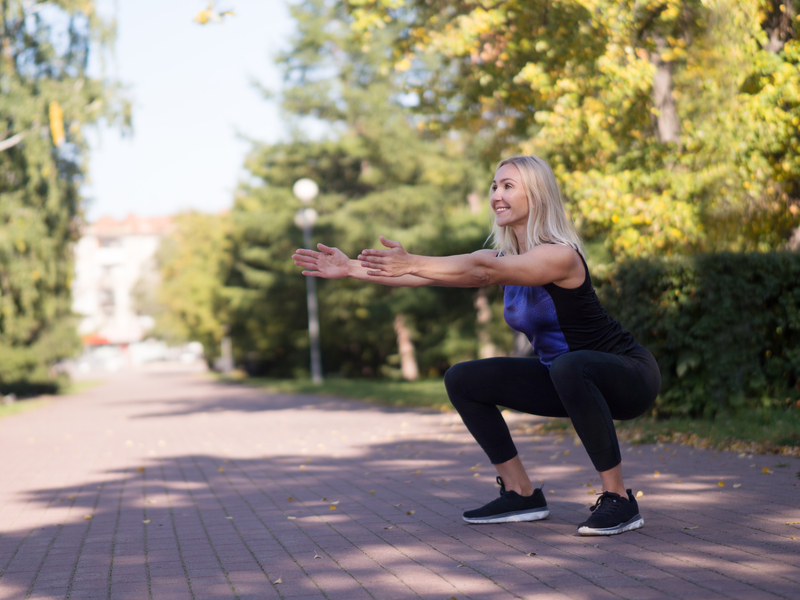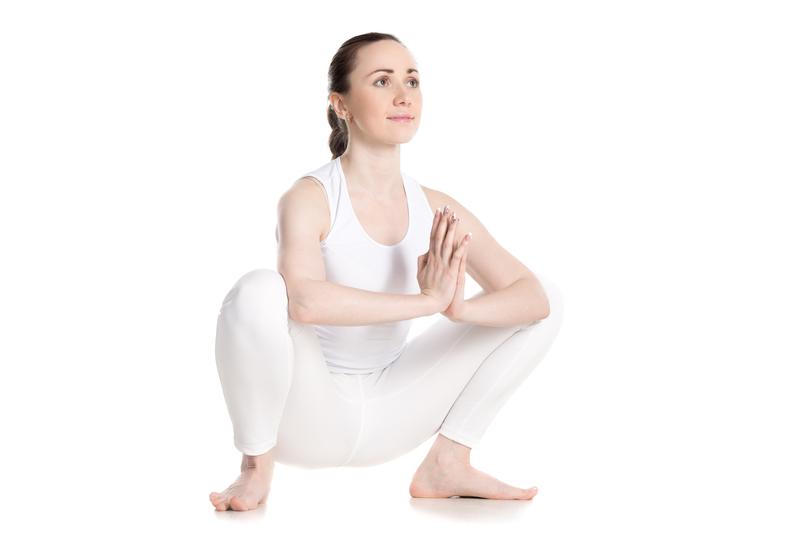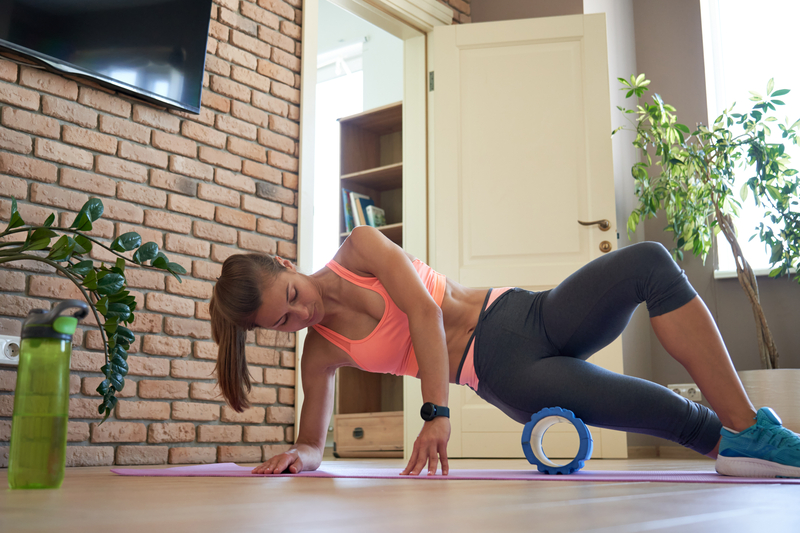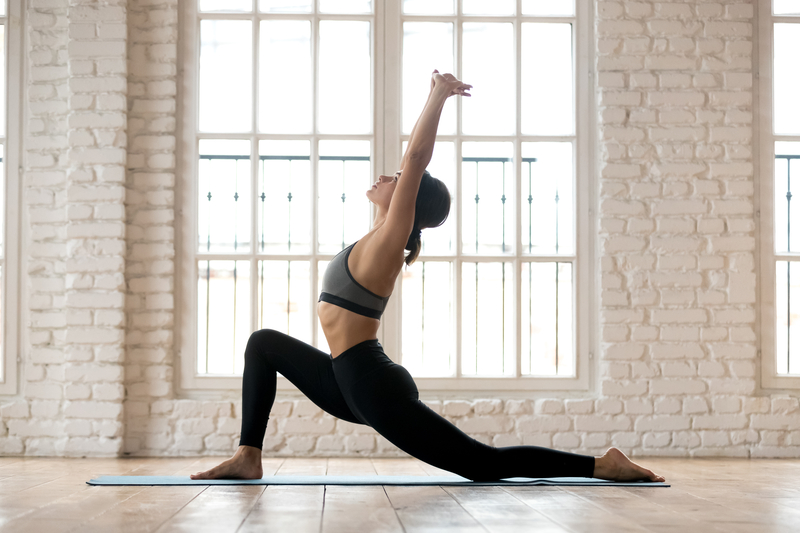Drop It Low! How to Get Lower in Your Squat

With all the focus on booty building, you’re sure to come across the need for squats at some point, and improving your squat depth is part of that equation.
What Are the Benefits of Squatting?
Why on earth would anyone want to put themselves through such a torturous exercise? (Besides me. 😉) Well, as difficult as squats may be, they provide huge benefits once you get the movement down correctly.
You can improve your daily functionality by performing squats. Squats will help you move better in your day-to-day activities, make your legs, core, and butt stronger, and help you maintain your independence as you get older. And stronger also means less chance of injury and falls.
Because squats work your entire lower body as well as your core, they can build overall strength and power, helping you perform better across the board. Not only that, but as you can imagine, squatting burns an incredible number of calories. And all that exercise can help you tone up and look sexy while simultaneously shedding some extra pounds.
Form, Form, Form
Yes, there are a lot of things to consider when looking to improve your squat depth. But the most important on that list is: how do you do a proper squat? While you can try many foot positions, starting with a body squat (with no weight) and a neutral foot placement is a good way to get acclimated to squatting.
Start with your feet about hip-width apart and point your toes slightly out to the sides. The goal is to kick your hips back (as if you’re about to sit in a chair) while bending at the knees and keeping your chest, shoulders, and head upright and relatively straight. When squatting, always break at the hips before breaking at the knees. This will help ensure you are giving yourself the best opportunity to maintain lower back stability. It also enables you to work within the movement pattern that activates the muscles in the optimum order.
You may want to clasp your hands in front of you. Keep your knees aligned with your toes as you go through the movement.
Continue squatting down until you can’t go lower or until your heels start to come up off the ground. (This is where better ankle mobility comes into play.) Pause here and then explode upward by straightening your legs, squeezing your glutes, and bringing your hips forward. Repeat.

Why Can’t You Get Lower in Your Squat?
In your quest to drop it low, you may wonder why it seems so difficult and you’re so off-balance. There are some common, usually easily fixable, reasons:
- Mind-muscle connection—you may have heard of this, but when you’re working on your squat form, it’s a very important connection to make. The neuro-muscular connection pathways need to be established so the squat movement can feel safe and not dangerous. Once the motion itself is more familiar, you’ll be able to build that mind-muscle connection that allows you to easily drop it low as your muscles, tendons, joints, and ligaments become accustomed to the new movement pattern.
- You’re inflexible—working on your flexibility and your hip, ankle, and knee mobility will help a lot when it comes to improving your squat depth. Any stiffness will quickly limit your ability to move freely in the range of motion you need for deep squats.
- Arthritis or injury—if you’re suffering from pain during squats, you may have swelling in tissues or joints, be dealing with arthritis, or be experiencing an injury. If your pain remains after a few sessions of serious stretching and lots of body squats, consider seeing a specialist before resuming your program.
How to Get Lower in Your Squat
A great way to drop it low with your squats is to use a variety of stretching and flexibility exercises. Loosening up stiff, taut tissues will help your body lubricate joints and move more freely, so you can get into a nice deep squat position. Do these exercises regularly after your warmup, and over time, you should start noticing significant squat depth improvement.
The Yogi Squat—this may look a bit odd, but it is a fantastic road to improving your squat depth and so much more. Start by placing your feet wider than hip-width apart and point your feet outward. Squat down by bending at the knees and bringing your upright torso down toward the ground until you’ve gone as far as you can.
Then, bring your elbows to the insides of your knees and apply gentle outward pressure. Lastly, press your palms together in front of you. Sit in this stretch for several deep breaths before pushing back up to standing.

Rolling—rolling your muscles, either with a foam roller or with a therapy stick, can help release the tissues surrounding the muscles, allowing them to be stretched to become more flexible. Roll the muscles in your calves for better ankle and foot mobility. Roll out your hips, glutes, hamstrings, and thighs to help loosen up your leg muscles for easier flexibility and range of motion.

Ankle Mobility—the ankles and calves are interrelated when it comes to mobility and stretching. Helping one helps the other. Do simple calf raises off the edge of a stair, pausing at both the top and the bottom of the movement.
You can also use resistance bands while flexing your foot up, down, and side to side to work on flexibility. Remember, to drop it way down low, you need your heels to stay on the ground, and that means great ankle flexibility is required.

Hip Flexor Stretch—getting more mobility in your hips is also key when it comes to improving squat depth. Start by kneeling on the ground on a mat or softer surface. Next, bring your right leg forward, placing your foot flat on the floor with your knee bent at 90 degrees. Bring your left leg straight out behind you and then push forward at the hip while keeping your torso upright and stable.

Knees Over Toes Stretches—this sounds simple, and it is. Simply lunge forward onto a medium-height platform with your right leg. Keeping your foot flat, bend forward at the knee as far as you can go without lifting your heel. As soon as your heel starts to lift, stop and hold the stretch for ten seconds, and then push back to the start. Repeat with the opposite leg.
Now you have the plan for improving squat depth. Start with body squats and work your way up from there, only adding weight once you’re comfortable with your form and squat depth at each level. Using all or some of the above techniques should help you in your efforts to drop it low.
Just remember that perfect form is king, and you want to perfect your form before adding weight. More weight will come over time and with practice. But, once you’ve improved your squat depth, you’ll really start to reap the benefits of this exercise.





